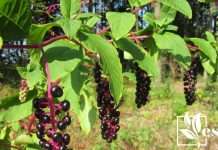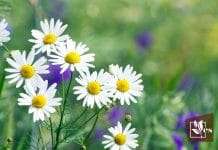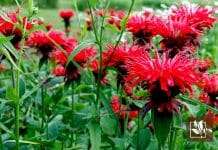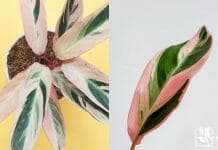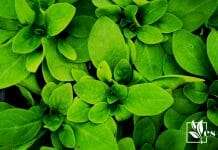Plants that look like rhubarb are numerous with different requirements but they all look similar! The confusion comes when you notice they have the same leaves and stems as this Rheum genus plant.
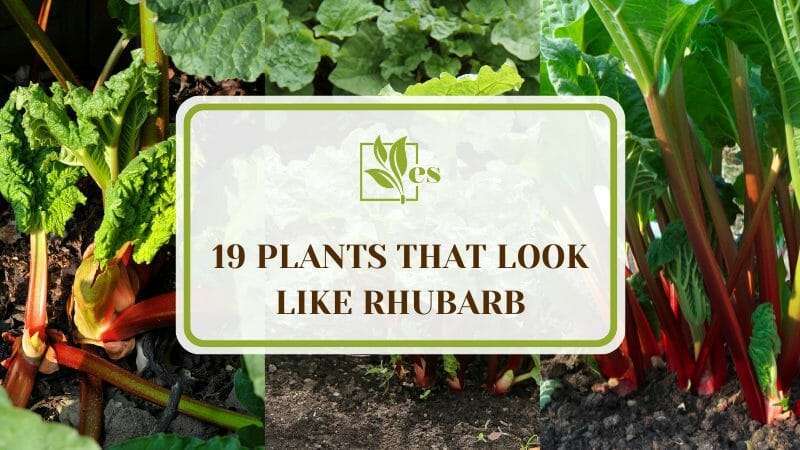
Just because they look alike does not mean they are in the same Polygonaceae family or have the same characteristics. So what plants are these that are confusing you, keep reading to find out all about them.
JUMP TO TOPIC
- A List of Plants That Look Like Rhubarb
- 1. Arctium Minus
- 2. Burdock Weed
- 3. Indian Rhubarb
- 4. Monk’s Rhubarb
- 5. Greater Burdock
- 6. Beetroot
- 7. Swiss Chard
- 8. Canaigre Dock
- 9. Brazilian Giant Rhubarb
- 10. Japanese Knotweed
- 11. Bog Rhubarb
- 12. Prickly Rhubarb
- 13. Pokeweed
- 14. Poison Hemlock
- 15. Skunk Cabbage
- 16. Chilean Rhubarb
- 17. Buckthorn
- 18. Nightshade
- 19. Dogban
A List of Plants That Look Like Rhubarb
These plants all look like Rhubarb, they all have stems, red color, or grow as tall as the Rhubarb plant would.
1. Arctium Minus
It is easy to confuse this wild rhubarb as it is known as Arctium Minus with the true one. It is native to Asia and Europe and grows more naturally in North America. You will find it in familiar places like pastures, roadsides, open woods, or waste areas.
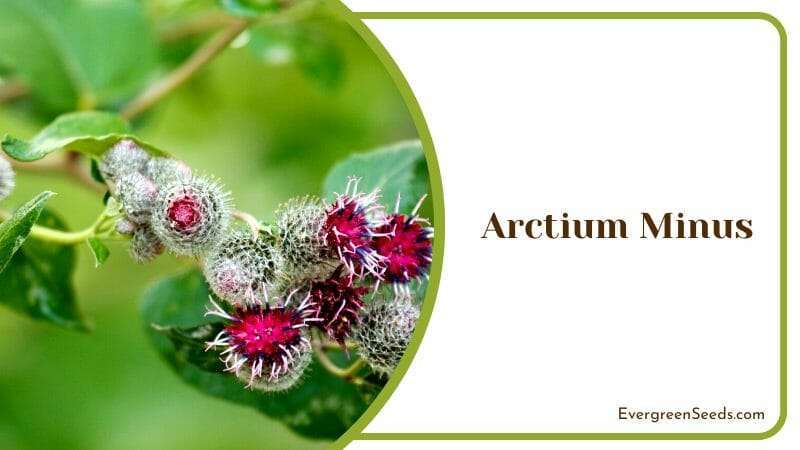
This biennial produces tall reddish-colored stalks and large heart-shaped wavy leaves similar to the original one. The undersides of the leaves are woolly, and it reproduces using seeds. It has small reddish-purple flowers carried in dense heads. The fruits are small and easy to disperse by the wind.
This weed is not edible but somewhat toxic, with a diuretic effect on those who eat it. Some people report having skin allergic reactions or irritations if they come into contact with it.
You can tell this plant apart by looking at its hollow stalks and fuzziness on the leaves’ undersides. Its height is also different reaching up to six feet tall. It thrives in USDA zones two through ten.
2. Burdock Weed
This perennial weed is native to Asia and Europe and grows in North America, and you can find its name written scientifically as Arctium Asteraceae. It is closely related to the original Rhubarb. It has large, dark green leaves growing up to two feet tall. It has white flowers that grow clustered together in a cone shape.
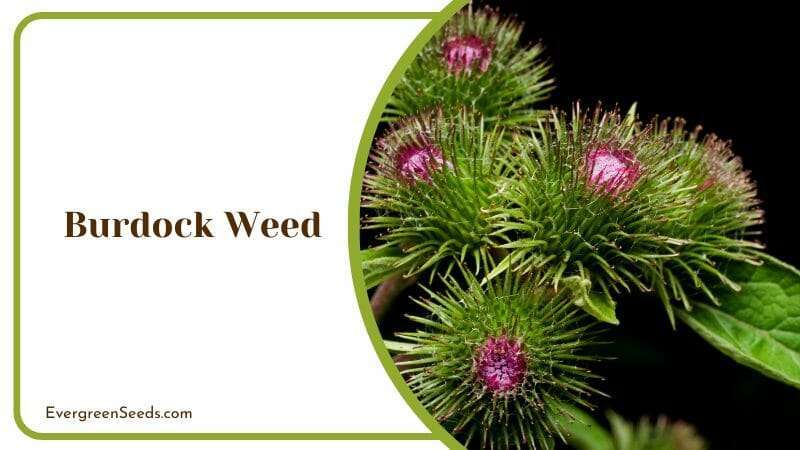
It has a fleshy, thick taproot that resembles a miniature version of its look-alike. You will find it invasive in most locations as it’s difficult to control once established. Burdock weed is edible and common for medicinal uses. The leaves make a tea that relieves cold symptoms. The roots make an excellent roasted vegetable that most love to make.
The one significant difference between the common burdock vs rhubarb is the color of their stems, whereas the true one has much more red while the burdock carries more maroon.
3. Indian Rhubarb
This is not an Indian version of this crop, but its name goes like that. It is also known as umbrella rhubarb, or even Darmera Peltata, a flowering plant in the saxifrage family. This large herbaceous perennial is native to America and grows up to six feet tall.
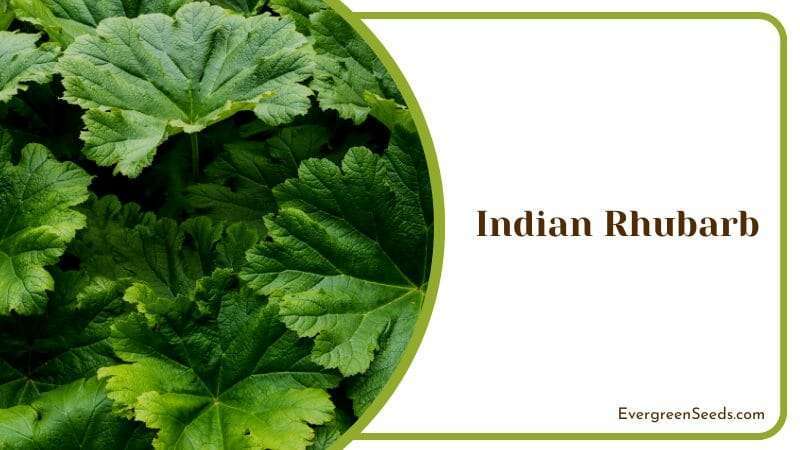
It has umbrella-like, green glossy, visibly veined leaves that get their rich color in the autumn. The flowers are clusters of small pink blooms in the late spring or early summer.
It has edible fleshy red roots with a tart flavor similar to the original one. You will find it flourishing well in ponds, wooded, or damp areas and spreads through rhizomes. It grows to form an umbrella-like shape.
4. Monk’s Rhubarb
This perennial herb is in the buckwheat family and grows up to four feet tall. It is a native of Western Asia and Europe. Monk’s has extra large leaves ovate-round in shape with long leaf stalks stout with irregular margins.
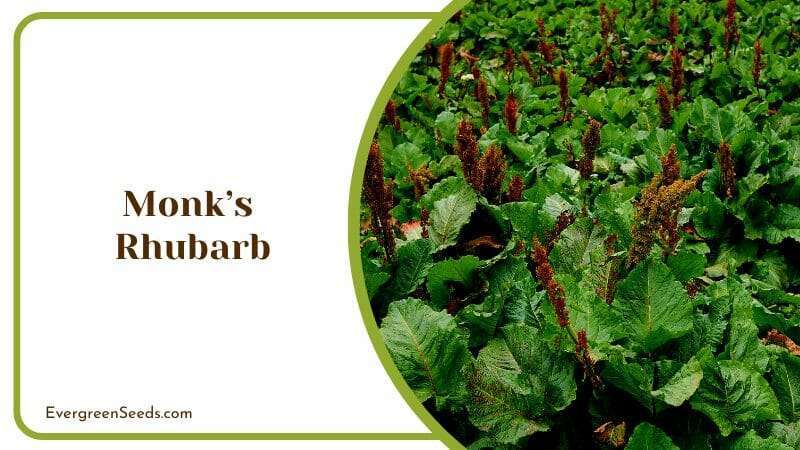
They carry a glossy deep green color with a deep burgundy stem, just like the Rhubarb. The upper side of the leaves has no hair, while the lower has plenty of hairs found close to the veins.
The leaves of the Rumex Alpinus are pale green, confusing many people with the actual rhubarb plants. The stem tips have multiple green, red or purple flowers blooming in the summer.
Though lesser, you can eat this plant and use it for medicinal value in its roots. You can use these leaves as a salad or as cooked greens. You can use the stems to make jams and pies or chew them raw. When cooking Monks, ensure that you remove the skin from the stem, as it is bitter.
5. Greater Burdock
This Aster family member is quite attractive, featuring its large, dark green leaves with violet-colored flowers. The leaves are wavy-edged with a long petiole and hairy on the underside. The flowers appear in mid-summer, starting from July to September.
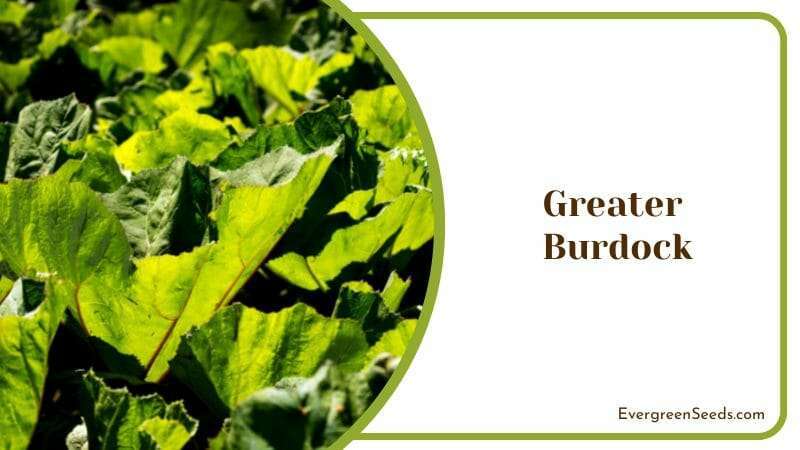
This biennial weed loves to invade areas with high nitrogen levels, primarily parts of Australia and North America. It grows up to almost reaching 10 feet tall, in addition, the Arctium Lappa bares some fruits that are compressed by short pappus hairs.
These fruits are a hazard to humans, dogs, and horses. The pappus hair is also an irritant, mainly if it is carried by the wind and comes into contact with your eyes.
It causes severe dermal irritation, ophthalmia, and possible respiratory problems. It is commonly found in the wild, but most people also grow it in their gardens and refer to it as edible Burdock. This means next time you hear someone mention this name, know they are talking about the same thing.
6. Beetroot
Beetroot is often mistaken for the actual plant due to its thick stalks. It is a part of the class Betoideae. This root vegetable is closely related to swiss chard and spinach. Eat it raw, pickled, or cooked, but most people are only familiar with it as a garnish or as an ingredient in salads.
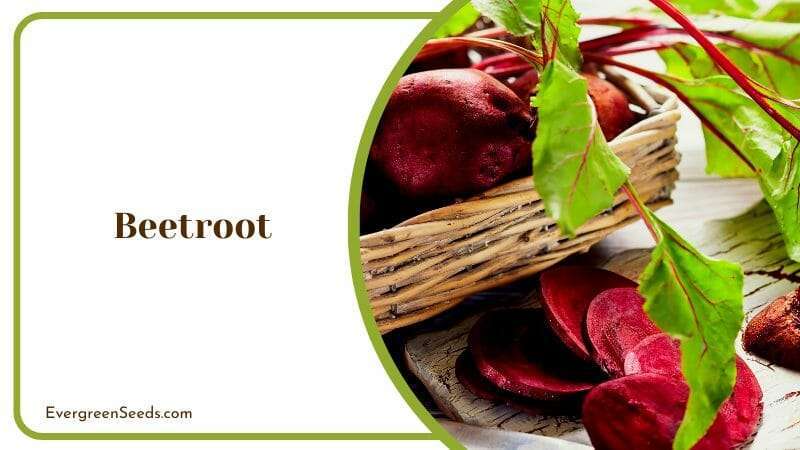
Beets have deep red leaves and stems. Its flowers are edible and make a great addition to salads. It is hardy, thriving in most climates, and is an excellent addition to your garden and plate when you want that color pomp. Most people confuse it with the actual plant.
7. Swiss Chard
This fleshy leafy vegetable is commonly confused with the actual plant, which does look like rhubarb so much from its red veins. Although the latter is true the two plants are very different, as they share some similarities. It is a member of the beet family and native to the Mediterranean region.
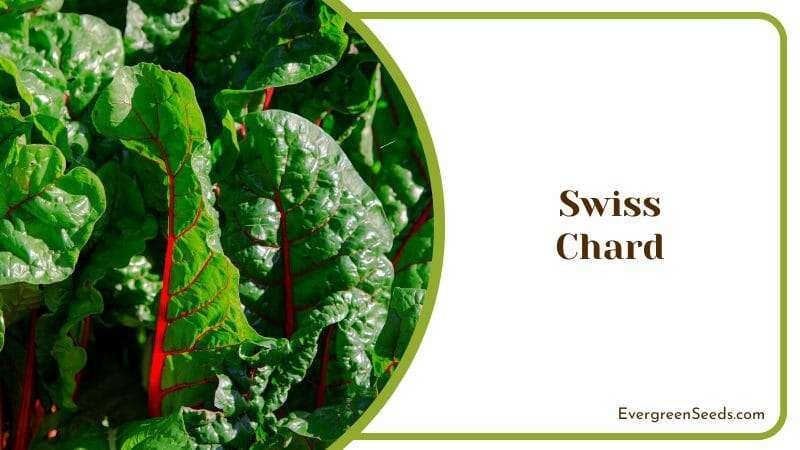
The leaves are dark green with a slightly bitter taste, while the stalks are fleshy and thick. Beta Vulgaris can be either red or white, this vegetable is nutritious and high in Vitamins A, C, and K. It’s a good source of fiber and iron and advisable for women in their menopausal stage. You can eat it raw, cooked, or used in salads and soups.
8. Canaigre Dock
This perennial flowering plant is native to North America and commonly found in South Western America and Northern Mexico. It is a food plant widely grown for its roots. The branching and leaves of this plant are very similar to that of Rhubarb.
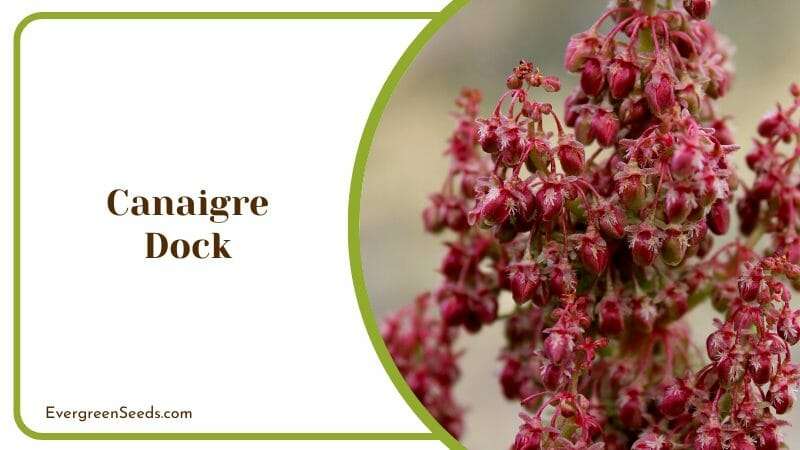
It is in the buckwheat family that grows up to four feet tall. It has triangular green leaves on the top and white on the underside. Its flowers are small and green with dark brown fruit.
Canaigre is commonly grown as an ornamental plant, with its roots used for various medical purposes, especially for flu and colds. In addition, it can also treat sore throat and diarrhea.
You can also use it in leather tanning due to its high tannin content. The leaves and stalks are edible, with most using them the same way as the actual ones. However, it should not be used as an alternative.
9. Brazilian Giant Rhubarb
If you see a large plant that looks like rhubarb, that’s the Brazilian Giant. It’s a member of the nettle family. It grows up to 20 feet tall and has huge leaves measuring up to four feet wide. It’s, in fact, a real giant!
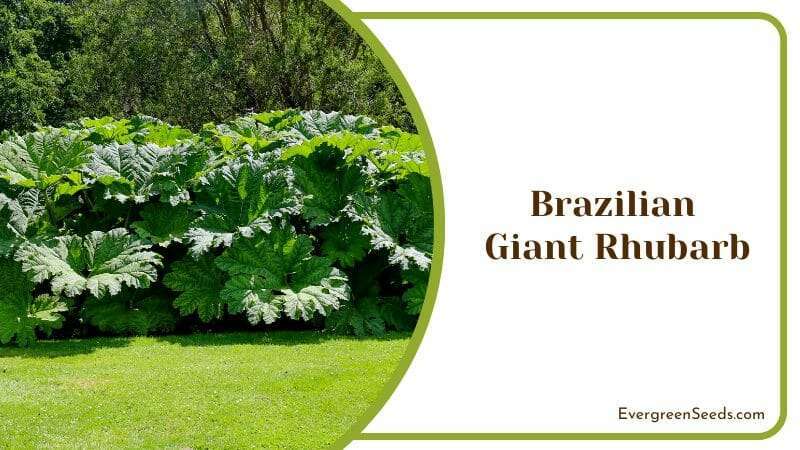
This clump-forming perennial is native to Brazil but grows in many countries across the globe. It has large leaves with spikes on the underside spreading along the stalk. The leaves are dark green and stand out among other plants making them easily noticeable. Due to its domineering nature, you can use the Gunnera manicata as a shade.
10. Japanese Knotweed
This is a member of the buckwheat family, although it’s commonly confused with the original one. It is native to North America, and hard to control its growth, thus invasive. It has large, heart-shaped leaves and hollow reddish or purple stems.
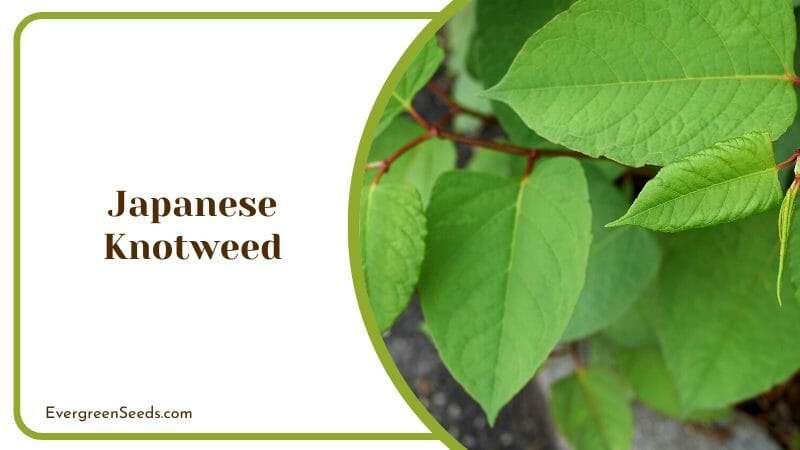
The flowers are small and white, blooming in late summer. It grows in dense clumps, with its stems reaching two meters tall. Most gardeners refer to it as donkey rhubarb for some funny reasons.
11. Bog Rhubarb
Bog carries other names like butterbur, great butterbur, bogshoms, blatterdock, or sweet coltsfoot. This perennial plant is in the family of Asters and is native to Japan, Korea, China, and Sakhalin. Its rootstocks love creeping and are stout and fleshy.
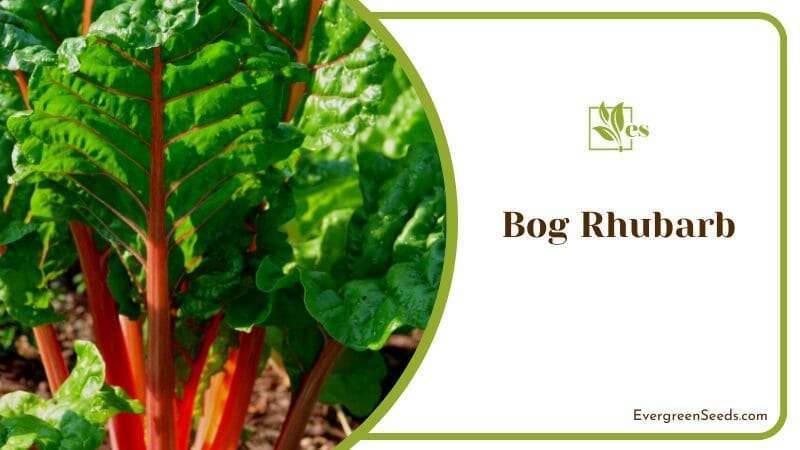
The Petasites Japonicus are unique in the way they form flowers before the leaves appear. The flower heads come out in crowned clusters and have dense spikes. Most of their bracts are interspersed on a round, thick flower stalk. This stalk has a purplish color and shows up in the late winter or beginning of spring.
The leaves of this plant were used as rain hats or butter wrapping material in the past. This plant has medicinal value due to its alkaloids.
12. Prickly Rhubarb
This is a perennial plant that grows in USDA zones seven through nine. It is a genus of the Gunneraceae family and is native to the temperate regions in the Southern Hemisphere.
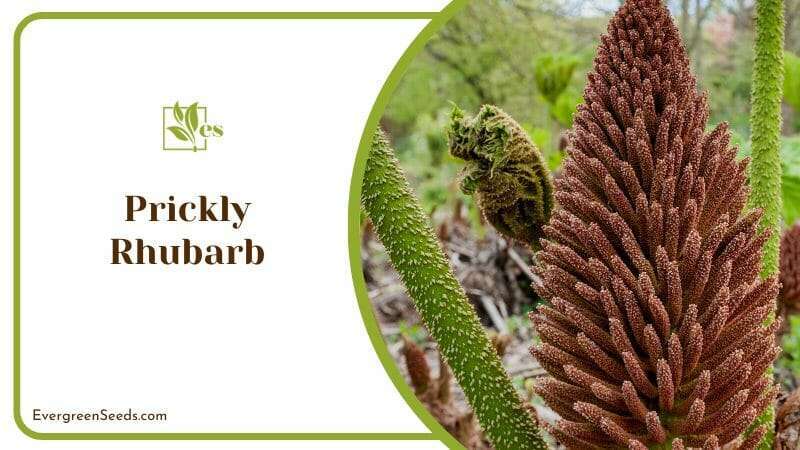
It has large wavy leaves on thick stalks like the actual one, but they grow much larger, at least six to ten feet wide. The stalks have reddish, rubbery prickles and grow to five to eight feet long. They prefer growing in water-based areas near ponds, lakes, or swamps and are inedible.
13. Pokeweed
This plant is native to Eastern America and popularly grows in fields, woods, or along roads. Pokeweed is also known as pokeberry or American nightshade. It is a perennial that reaches ten feet tall. The leaves are oval-shaped and large with pointed tips.
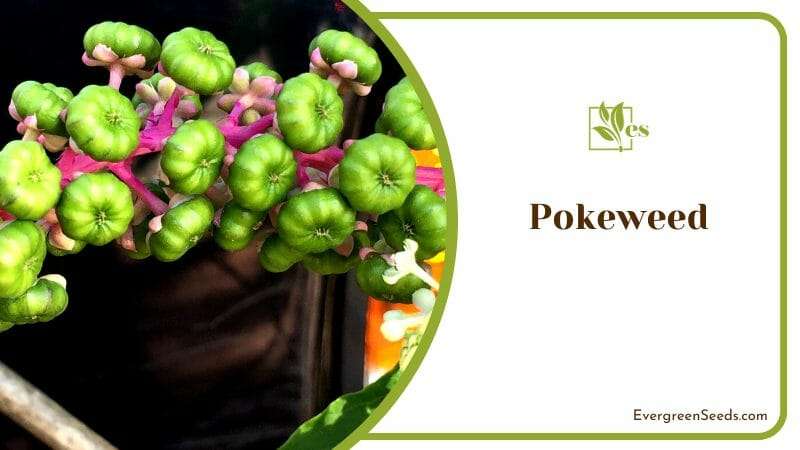
It has red or green stems and tiny white flowers. Its fruit is blackberry-like, containing seeds that are harmful to humans. To many gardeners, it’s considered a weed, but it has several uses. Eat the young leaves as greens of the phytolacca Americana, while you can make the berries into jelly or wine.
14. Poison Hemlock
This plant is of the carrot family and can be found throughout North and Eastern America. It is a flowering plant growing to about six feet tall which has nothing to do with the carrot’s growth. It is a biennial herb with hollow stems purplish in color and spotted with white or red.
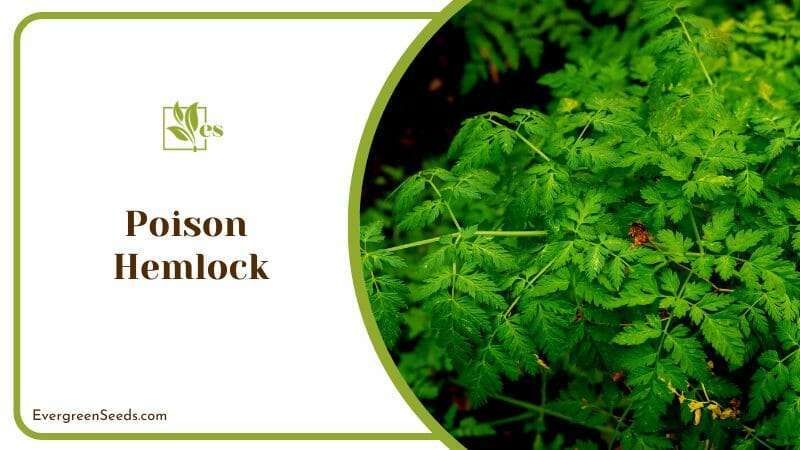
The leaves are large and fern-like Conium Maculatum, with the plant producing small white flowers in clusters. The entire plant is toxic to humans and pets, and any ingestion can be fatal, even in small quantities. Now you know it’s a poisonous plant that looks like rhubarb.
15. Skunk Cabbage
Is this a relative of the famous skunk? This plant is native to Eastern North America and belongs to the Araceae family. It has large, purplish-green leaves close to rhubarb and can grow up to two feet long. The plant flowers are tiny and yellow, packed together in a thick fleshy stalk.
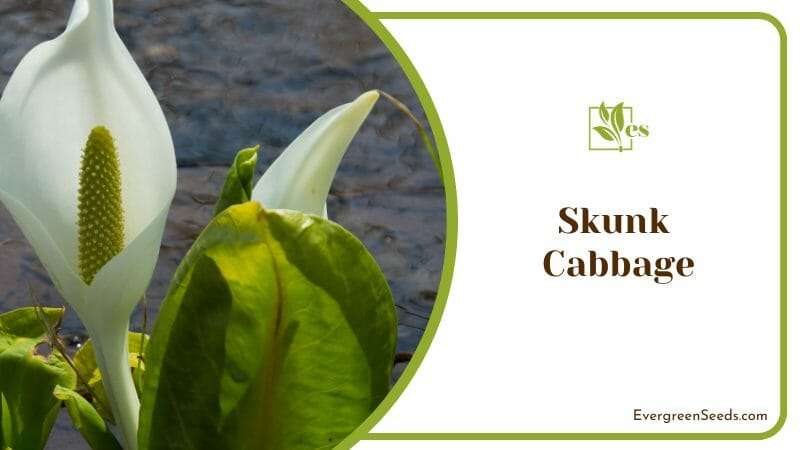
It blooms brightly in spring, attracting hummingbirds, bees, and other pollinators. You can use the Symplocarpus Foetidus large leaves as a natural umbrella in the snow or rain. This vegetable is a foul-smelling plant in bloom, no wonder the name! Indeed they are relatives!
16. Chilean Rhubarb
Chilean is native to Argentina and Southern Chile. It grows across the world as an ornamental plant. You will find it mainly in Ireland, New Zealand, and Great Britain.
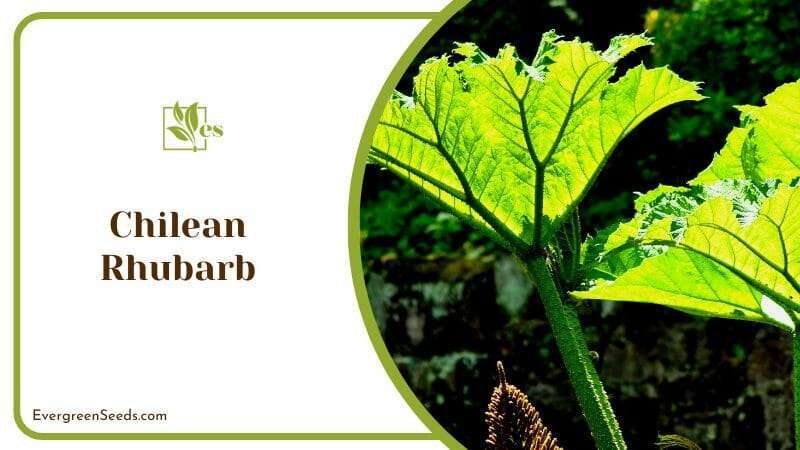
It is unrelated to rhubarb but carries similar looks and is used in culinary. This perennial has large leaves growing up to two meters tall. Its flowers are small spikes with a cone shape that bloom from Spring to early summer. It has orange fruits with many seeds, estimated at least 80,000 seeds per plant.
It is an invasive weed that has become a menace in many gardens in the West of Ireland. Its large leaves form a dense shade that prevents other species from growing under them. The European Union considered it invasive, making it illegal to produce, import, or sell within the EU.
In some parts, this plant is recognized as a pest plant, for example, in New Zealand, under the National Pest Plant Accord.
17. Buckthorn
Buckthorn is a common look-alike to Rhubarb but is not related at all. It is highly poisonous, causing diarrhea, vomiting, and even death if consumed. It is native to North America and East Asia but is commonly found in temperate and tropical areas.
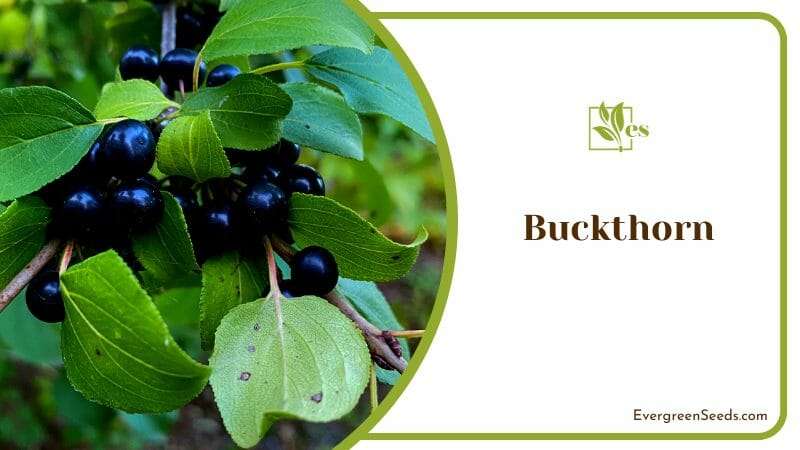
It is an evergreen invasive species with leaves growing almost six inches long and arranged alternately in opposite pairs. It forms veined curves towards the tip of the leaf, making it distinct.
Its flowers are yellowish-green and small, with both males and females on separate plants. It has red or blackberry fruits hanging on the end of the branches of the shrubs. You should not eat these as they are poisonous and should be kept away from kids and pets.
18. Nightshade
Nightshade is another plant that resembles the original rhubarb. It is native to Eurasia and was introduced to South Africa, America, and Australia.
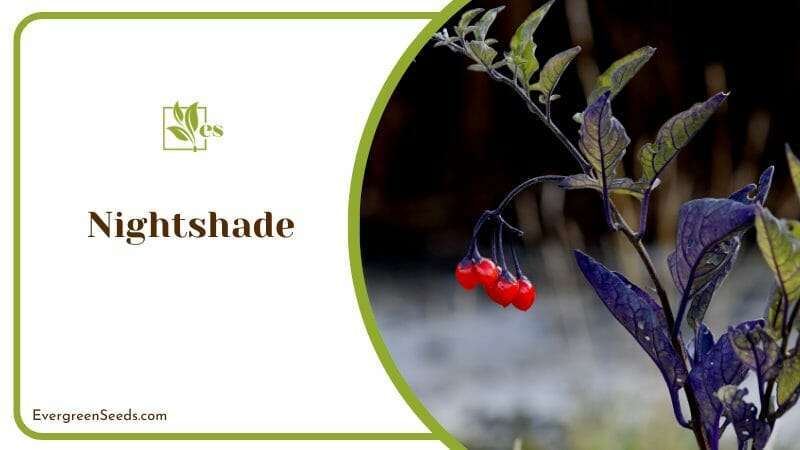
This annual plant is spineless and hairless with erect or trailing branches. The flowers carry five white petals arranged in a star shape. These clusters arise from a stalk between the leaf nodes.
Its fruits are small, smooth, and round, initially green before they turn black when ripe. These fruits are toxic when colored green, but once they turn black, they are edible.
This plant is poisonous as it carries steroidal alkaloids like solanine, affecting the nervous system. Some nightshades contain irritants like saponins that cause diarrhea and salivation. This plant may also accumulate toxic levels of nitrate. Cooking eliminates these toxic alkaloids, making them fit for human consumption. Horses cannot tolerate eating it, but cows do.
19. Dogban
This perennial is native to North America, Asia, and Europe, and scientifically it is called Apocynum spp. Dogbane gets its name from a species that was used to poison dogs. It is a poisonous plant both to animals and humans. All the parts are toxic and cause cardiac arrest if consumed.
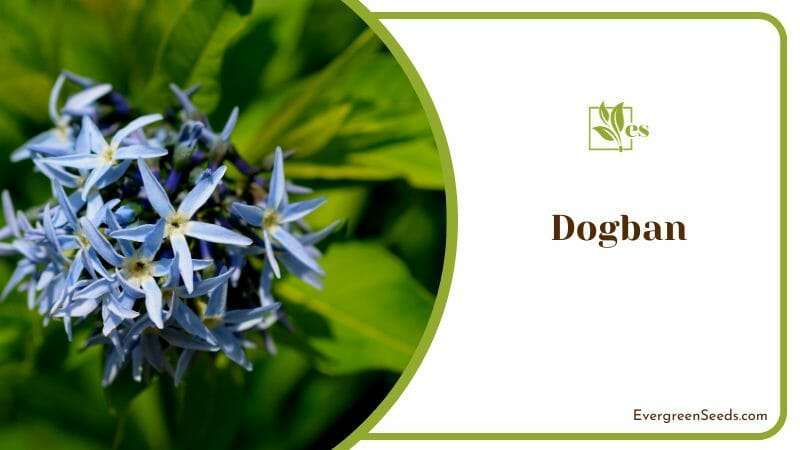
It grows up to two meters tall with reddish stems with milky latex that causes skin blisters. The leaves are simple, broad, and opposite each other. They have a smooth top with white hairs on the lower side.
The flowers are white, with large sepals carrying female and male organs. They bloom from July to August and are pollinated by butterflies and moths.


